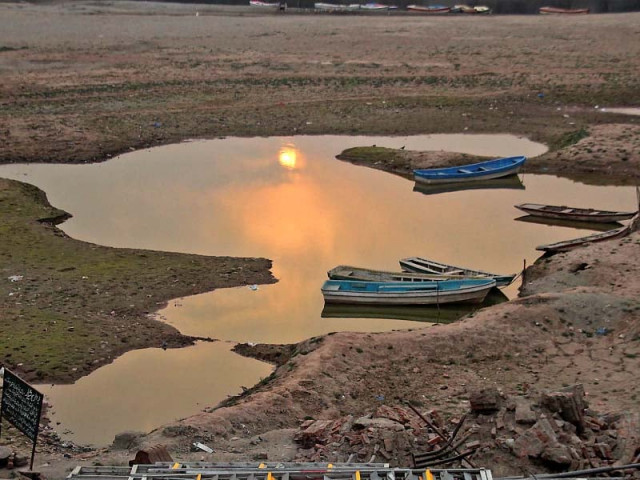Ravi, Sutlej report unusually low water levels
Despite the monsoon rains, riparian zones remain dry and infertile due to the lack of flowing irrigation water

There was once a time, when rivers like the Ravi and Sutlej could be spotted from miles afar given their abundant reservoirs of glistening water however, as the climate crisis hits the country in its full, merciless glory, even big signboards cannot help people identify the waterbodies, which with their parched plains, are now only rivers in name.
Throughout the history of the subcontinent, the arrival of the monsoon rains would signal the reawakening of the Ravi and Sutlej rivers, which would start brimming with rainwater. This year however, climate change alongside water developments in the neighbouring country have significantly reduced the level of rainfall in the catchment areas of Punjab. As a result, the water levels in the rivers have dropped to an alarmingly low level, bringing about negative repercussion for both the environment and the agricultural sector.
Malik Muhammad Rafique, a local from the Talwara area near Siphon Ravi revealed that until a few years ago, the river used to flow during the monsoon rains. “In those days, the Indian side also released water into the river, which flooded the low-lying areas of the river. Flooding used to temporarily damage crops and houses, but the flood water increased the fertility of the lands while the ground water level also increased. Now, Ravi is a river only in name since sand and dust cover the area instead of water. In fact, since the 80s and 90s, we have seen the water of this river gradually dry out. Ever since, India built the Shahpur Kundi Dam on the Ravi river, the little water that used to come from India has also stopped,” said Rafique.
“The drying up of rivers is a big tragedy for us. If Ravi dries up, it will cause irreparable damage to our agriculture since our crop area will decrease, making it difficult for our food needs to me met. Tubewells depend on agriculture, but agricultural costs will increase due to expensive electricity and diesel. The government will have to think for the future. We have to follow the methods of conserving rainwater,” implored Dr Anjum Ali Buttar, an agronomist and former Director General of the Punjab Agriculture Department.
As per reports from the United Nations Development Programme (UNDP), Pakistan's water crisis is worsening and by 2040, it can become the country with the lowest water reserves in the region. Moreover, Pakistan ranks fourth in the list of countries using the most water in the world yet there are only two major sources of water storage in the entire country, which can only store a 30-day supply of water. Statistics from the Indus River System Authority (IRSA) have further claimed that Pakistan receives about 145 million acre feet of rainwater, but due to lack of storage facilities, only 13.7 million acre feet of water can be saved.
Irfan Ali Kathia, Director General of the Provincial Disaster Management Authority Punjab (PDMA), affirmed that this year the plains had received more than normal rainfall however, the catchment areas received comparatively less rainfall. “The rain water in the catchment areas flows through the mountainous routes into the river. Due to less rainfall in the catchment areas of India, the water in the rivers has also come down. Moreover, the dam that India has built on the Ravi river has used 30 per cent of water. Due to the lack of water this year, the level of groundwater will go down further while pollution will also increase,” asserted Kathia.



















COMMENTS
Comments are moderated and generally will be posted if they are on-topic and not abusive.
For more information, please see our Comments FAQ